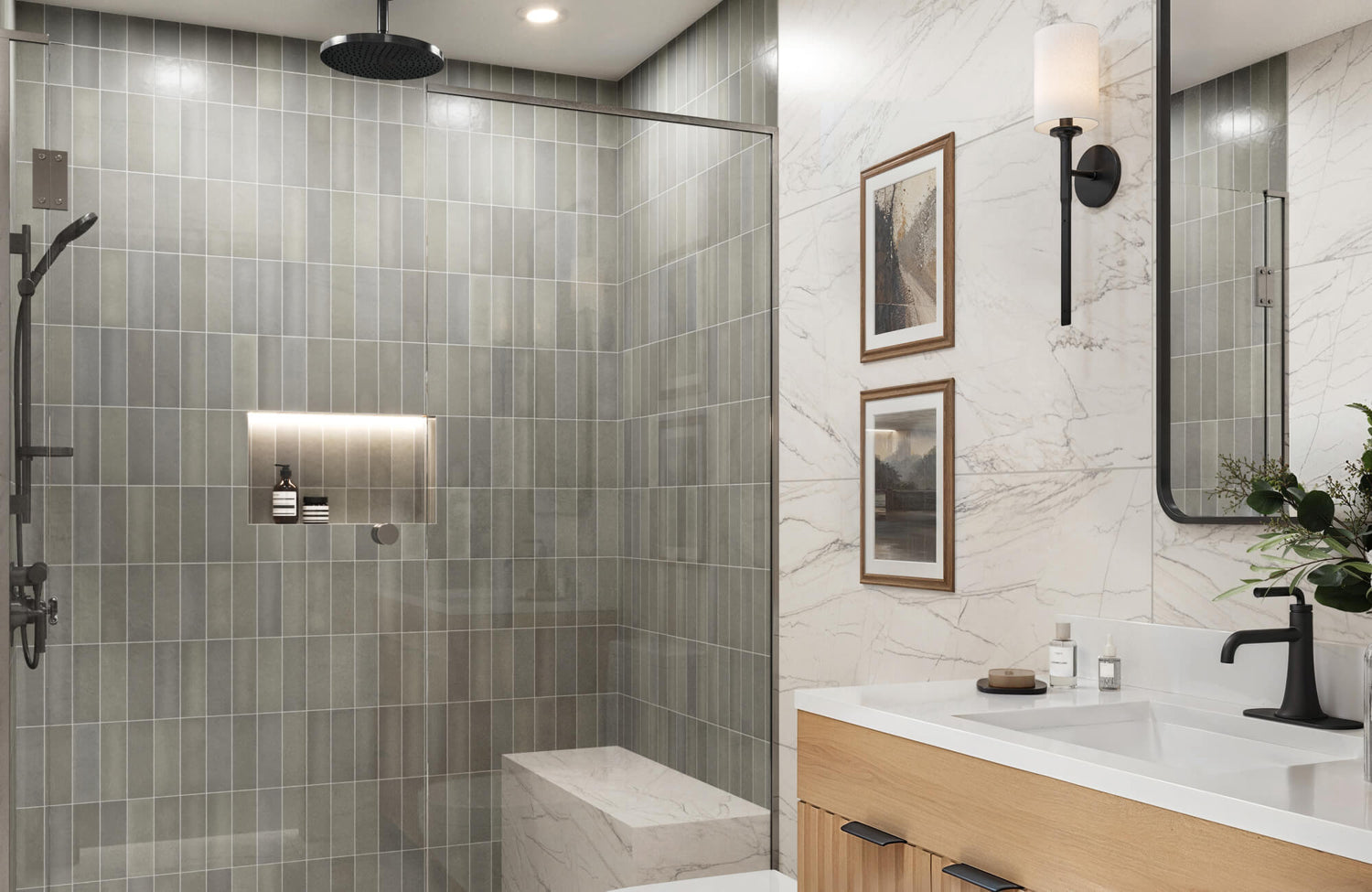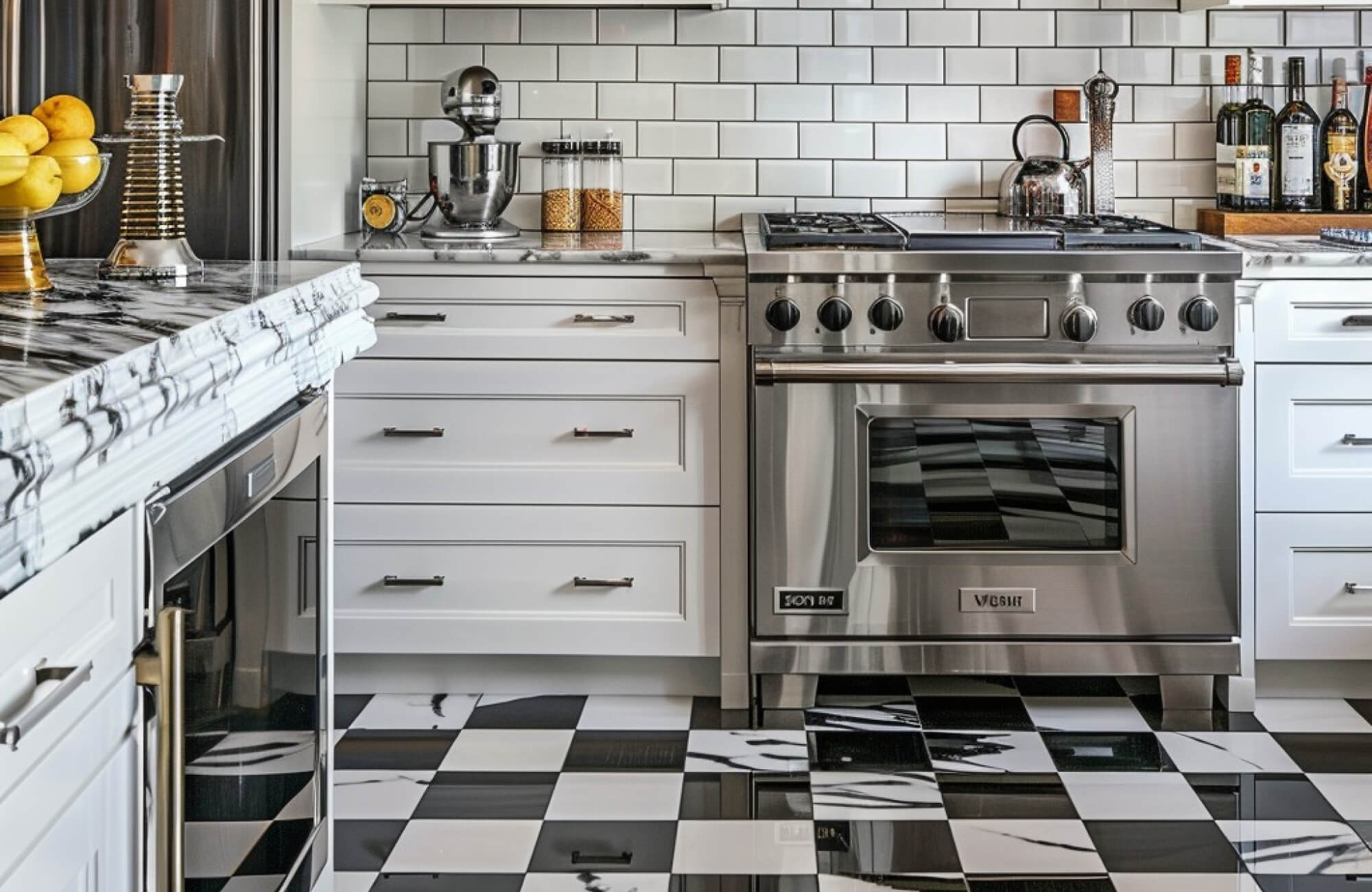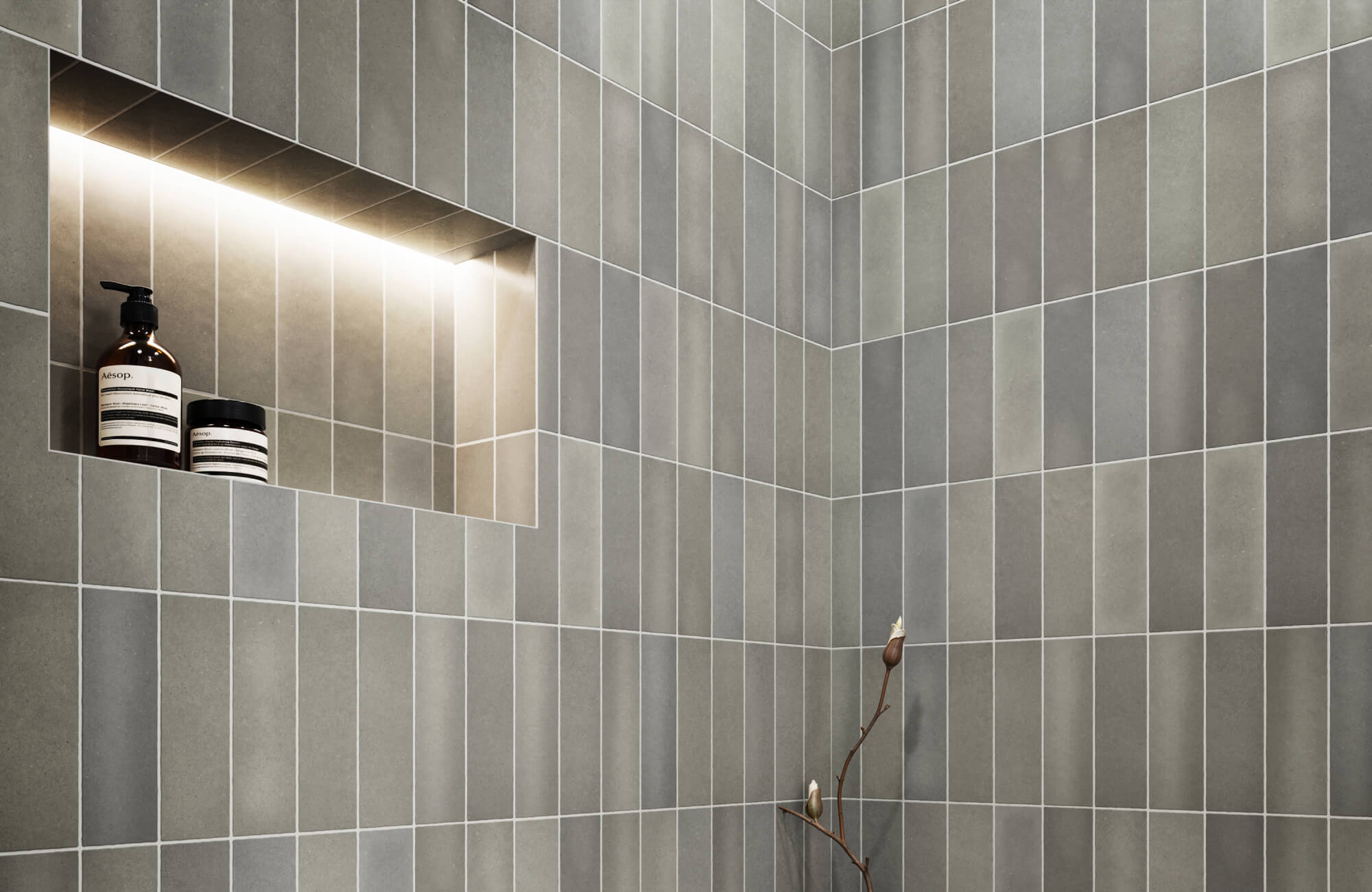Small bathrooms often pose unique design challenges due to their limited space. However, the right bathroom tile choices can significantly transform a small bathroom, making it feel more spacious, and inviting.
Key factors to consider when selecting tiles for a small bathroom include tile size, color, pattern, material, and installation techniques. By carefully considering these elements, you can create a visually appealing and practical space that maximizes every inch. In this article, we will look into these factors and provide expert tips to help you make informed decisions.

Choosing the Right Tile Material
The choice of tile material can significantly impact your small bathroom's overall look and feel. Here are some popular options to help you make an informed decision.
Ceramic Tiles
Ceramic tiles have long been a popular choice for bathroom walls. They are relatively affordable, versatile, and come in various colors, patterns, and finishes. For small bathrooms, consider using glossy ceramic tiles to reflect light and create an illusion of space. Matte finishes, while elegant, can absorb light and make the space feel smaller. Smaller ceramic tiles can also add visual interest and break up large, plain walls.
However, it's important to note that some ceramic tiles can be porous, making them susceptible to water damage and staining. To mitigate this, opt for glazed ceramic tiles with a protective coating that repels water and stains. Regularly sealing the grout between the tiles can also help to prevent water damage and mold growth.
Porcelain Tiles
Porcelain tiles are a more durable and water-resistant alternative to ceramic tiles. They are made from a denser clay body and fired at higher temperatures, resulting in a harder, more impervious surface. This makes them ideal for busy areas like bathroom and shower floors.
Porcelain tiles also come in many styles, from sleek and modern to rustic and traditional. They can be used to create a variety of design effects, such as subway tile patterns and large-format slabs. For small bathrooms, consider using light-colored porcelain tiles to brighten up the space. Darker colors can make the room feel smaller and more enclosed.
Natural Stone
Natural stone tiles, such as marble, granite, and limestone, can add a touch of luxury and elegance to any bathroom. However, they can be more expensive and require more maintenance than ceramic or porcelain tiles.
When choosing natural stone for a small bathroom, consider using lighter-colored stones to maximize the space. Darker stones can make the room feel smaller and more claustrophobic. Additionally, honed or matte finishes are more forgiving than polished finishes, as they can hide scratches and imperfections.
It's also important to note that natural stone can be porous and susceptible to staining. To protect the stone and maintain its beauty, it's crucial to seal it regularly. Regular cleaning and maintenance are also essential to prevent water damage and mold growth.

Maximizing Space with Tile Size
The size of your tiles can significantly impact the perceived size of your small bathroom. Here’s how to use tile dimensions to create the illusion of a larger, more spacious room.
Big Tiles, Small Spaces
Large format tiles, such as 24x24 and 24x48, can transform a small bathroom by creating a clean, modern aesthetic and an illusion of spaciousness. By minimizing grout lines, these tiles offer a seamless and uncluttered look, which helps the room feel larger and more open. A stunning example is the Wren 24x48 Matte Porcelain Tile in Oat shown in the photo above, which features a sleek finish and a neutral tone, making it ideal for enhancing the sense of space in a small bathroom.
However, it’s important to select tile sizes that are proportionate to the bathroom’s dimensions. Overly large tiles can overwhelm a small room, making it feel confined rather than expansive. For a balanced design, choose tiles that suit the scale of the space. Monochromatic large tiles enhance a minimalist, contemporary look, while subtle patterns or textures can add depth to more traditional styles. Thoughtful selection ensures that large format tiles work harmoniously within your small bathroom's design.
Small Tiles, Big Impact
Smaller tiles are another effective option for enhancing a small bathroom Their increased number of grout lines adds texture and depth, drawing attention away from the room's size limitations. Subway tiles, such as the Teagan 3x12 Glossy Ceramic Tile in Moss, can introduce a sense of movement and personality to walls, offering a vibrant yet calming touch with their sleek finish and earthy tone. Additionally, smaller floor tiles can break up plain surfaces, adding character and dimension to the space.
Mosaic tiles, in particular, offer versatile and stunning design possibilities. Their intricate patterns and vibrant colors make them ideal for focal points like feature walls, decorative borders, or shower niches. To maintain a cohesive look, match mosaic tiles to the bathroom’s color scheme. Bold mosaics can also create a statement, while monochromatic designs create a calming atmosphere. Although they require more maintenance due to the grout lines, their beauty and durability make them a worthwhile choice for small bathrooms.
The Golden Ratio
The golden ratio, a mathematical ratio found in nature and art, can also be applied to tile selection to create visually balanced and harmonious spaces. This approach helps establish a sense of proportion, making your small bathroom feel more aesthetically pleasing.
To apply the golden ratio, choose tiles with dimensions of approximately 1:1.618. For instance, you could use 3" x 5" or 4" x 6.5" tiles. You can also combine tiles of different sizes and shapes that follow this ratio to craft visually interesting patterns and layouts, adding elegance and balance to your design.

Creating Visual Interest with Patterned Tiles
A well-chosen pattern can transform a small bathroom from ordinary to extraordinary. Here’s how to use patterns effectively to add visual interest and personality to your space.
Subtle Patterns
Subtle patterns, such as small mosaics or geometric designs, can add texture and depth to a small bathroom without overwhelming the space. For instance, a mosaic tile backsplash can serve as a focal point in showers or behind sinks, while geometric patterns like herringbone or chevron, add a modern and sophisticated touch to the walls or floor. To maintain balance, pair patterned tiles with solid-colored ones to avoid visual clutter and create a cohesive design.
Bold Patterns
Bold patterns can make a big statement when used strategically in small bathrooms. One effective approach is to use a bold pattern on a single wall, such as the accent wall behind the vanity or in the shower, which can create a focal point. To ensure harmony, choose colors that complement the rest of the bathroom, like a bold floral pattern in blue and white paired with white subway tiles and chrome fixtures. Additionally, consider the scale of the pattern. Larger patterns can make a small space feel smaller, so it's best to choose smaller patterns for confined spaces.

Choosing the Right Colors
When selecting tile colors for a small bathroom, it's important to consider how different hues can affect the perception of size and light.
Light and Bright
Light-colored tiles are a timeless choice for small bathrooms as they reflect light, creating the illusion of a larger, brighter space. Soft, neutral tones like white, beige, and light gray are highly versatile and pair well with various design styles. An excellent example is the Sarina 3x12 Glossy Ceramic Fishscale Tile in Cloud shown in the photo above, which combines a unique fishscale format with a soft, luminous white tone to elevate the visual appeal of your bathroom. For a fun, contemporary look, consider cool pastel shades as well such as mint green, lavender, or sky blue. Warm off-whites, on the other hand, can bring a cozy, traditional charm.
To enhance the overall ambiance, you can also balance the color palette with complementary accents such as metallic fixtures or patterned tiles for visual interest. Additionally, grout color can play a role; darker grout provides contrast and definition, while lighter grout ensures a seamless, airy look. For a more confident decision, Edward Martin’s AR tool allows you to preview how these tile colors and combinations will appear in your bathroom, making it easier to finalize your choices.
A Pop of Color
Accent tiles are an excellent way to introduce a splash of color and personality into a small bathroom. Strategically placed accents, such as a colorful mosaic backsplash in the shower or behind the sink, can create a striking point and draw the eye to specific areas of the room.
When selecting accent tiles, it's important to consider the overall color scheme of your bathroom. A good rule of thumb is to choose accent tiles that complement the main color palette. For example, if your bathroom walls are painted white, you could use accent tiles in shades of blue or green to add vibrancy without disrupting the overall harmony.
Dark and Moody
Dark-colored tiles can be a striking choice for small bathrooms creating a dramatic and intimate atmosphere when used strategically. To prevent the space from feeling overwhelming, balance dark tiles with lighter elements such as white fixtures, light-colored grout, or patterned tiles. This contrast helps maintain a sense of openness while enhancing visual interest.
Combining dark and light tiles thoughtfully can also elevate your bathroom design. For instance, you could use dark tiles on the floor to ground the space and light tiles on the walls to keep it airy. Natural or artificial light can also help brighten the room, while reflective surfaces like mirrors, chrome fixtures, or glass tiles can further bounce light around. In a windowless bathroom, a darker color palette can create a cozy, spa-like retreat, adding depth and character to the space.
Designing a Small Bathroom That Maximizes Style and Functionality
Transforming a small bathroom into a stylish and functional space is all about careful consideration of factors like tile size, color, pattern, and material. Remember, smaller tiles can create the illusion of space, while strategic use of color and pattern can add depth and character to the room.
Don't hesitate to experiment with different tile combinations as well to achieve your desired look. Whether you prefer a classic, minimalist aesthetic or a bold, eclectic style, there's a tile option to suit your taste. By following these tips and guidelines, you can create a small bathroom that is both efficient and visually stunning. Ready to begin your tile journey? Consult with design professionals at Edward Martin for personalized consultations and handpicked tile samples to bring your vision to life. Our team of experts can help you craft a space tailored to your style and needs!







